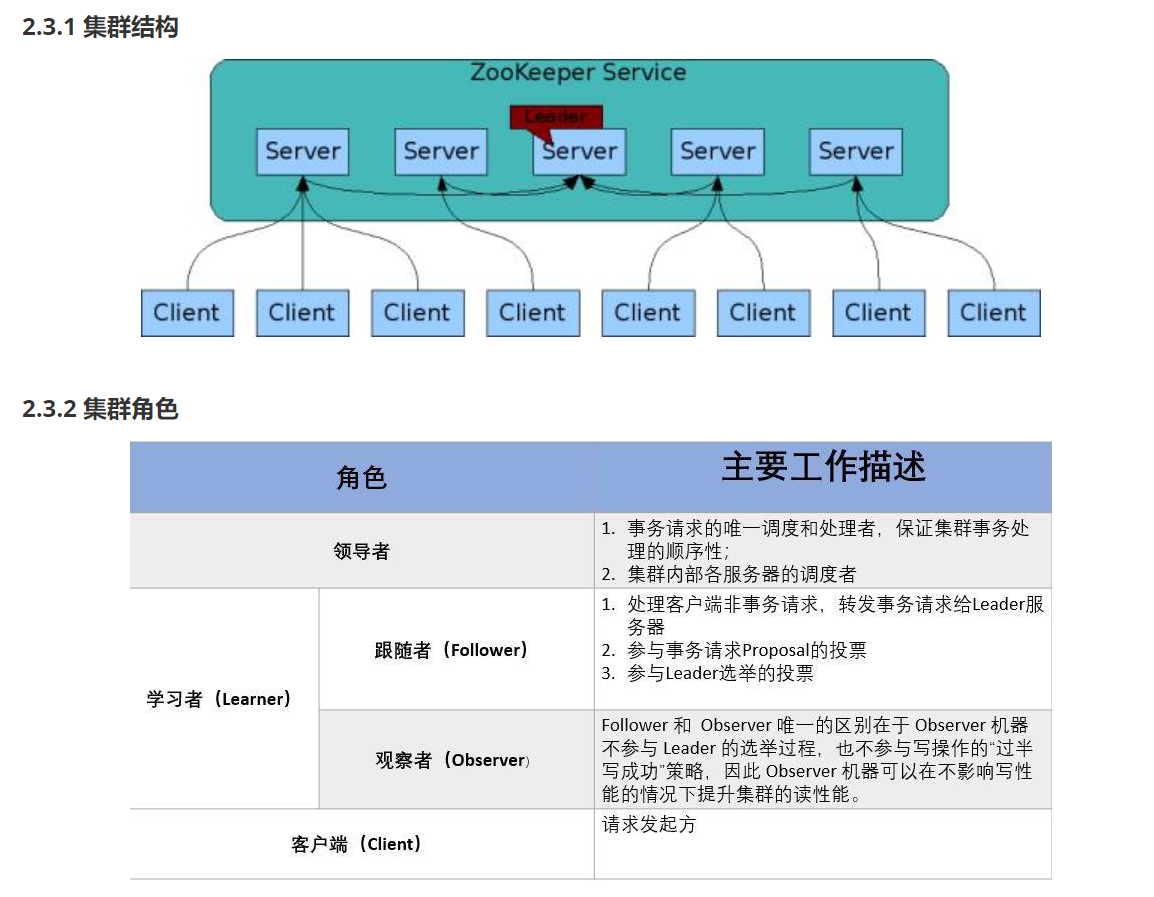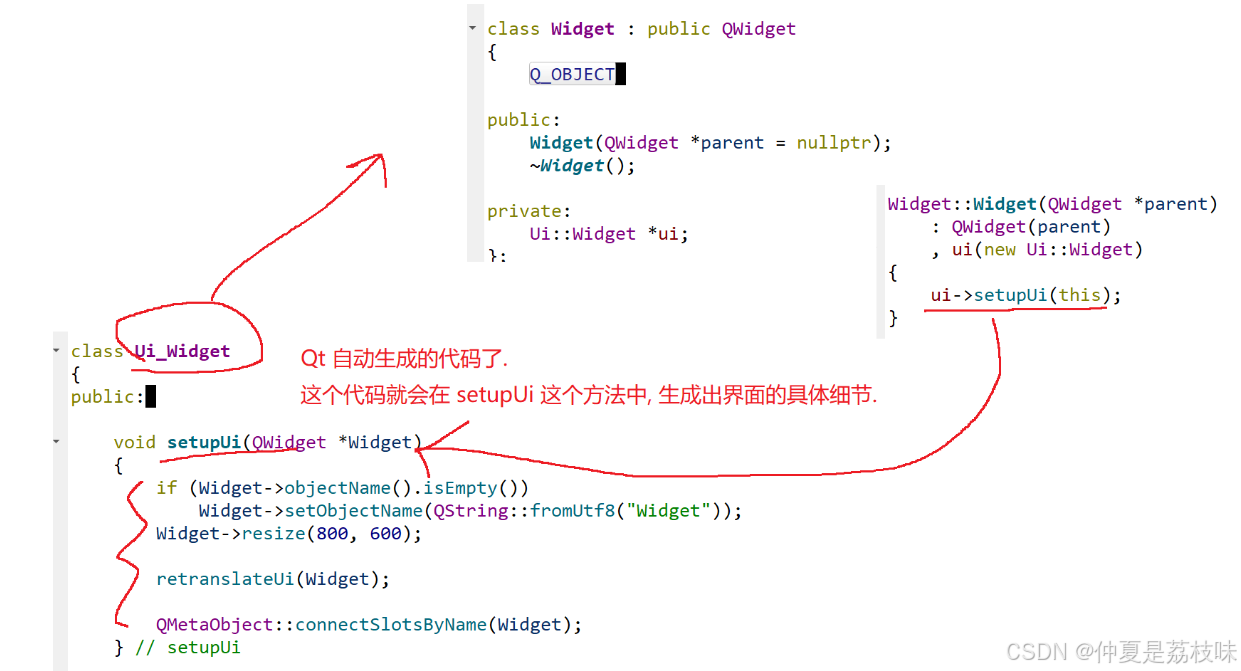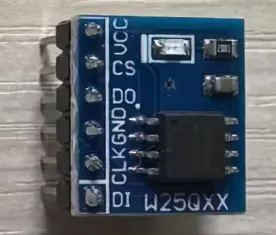第95步 深度学习图像目标检测:Faster R-CNN建模
基于WIN10的64位系统演示
一、写在前面
本期开始,我们学习深度学习图像目标检测系列。
深度学习图像目标检测是计算机视觉领域的一个重要子领域,它的核心目标是利用深度学习模型来识别并定位图像中的特定目标。这些目标可以是物体、人、动物或其他可识别的实体。与传统的图像分类任务不同,目标检测不仅要确定图像中存在哪些类别的目标,还要确定它们的确切位置和尺寸。这通常是通过在图像上绘制一个或多个边界框来实现的,这些边界框精确地标出了目标的位置和范围。
二、Faster R-CNN简介
Faster R-CNN 是一种流行的深度学习图像目标检测算法,由 Shaoqing Ren, Kaiming He, Ross Girshick 和 Jian Sun 在 2015 年提出。它是 R-CNN 系列模型中的一个重要里程碑,因为它提高了检测速度,同时保持了高精度。以下是 Faster R-CNN 的主要特点和组件:
(1)区域提议网络 (RPN):
Faster R-CNN 的核心创新是引入了一个叫做区域提议网络 (RPN) 的组件。RPN 能够在卷积特征图上直接生成目标的边界框提议,这大大减少了提议的计算时间。RPN 使用了一组固定大小和比例的锚框(anchors),对每一个锚框预测偏移量和目标存在的概率。
(2)共享卷积特征:
与其前任 Fast R-CNN 不同,Faster R-CNN 的 RPN 和最终的目标检测都共享相同的卷积特征。这意味着图像只需要进行一次前向传播,从而大大提高了计算效率。
(3)ROI Pooling:
一旦得到了区域提议,Faster R-CNN 使用 ROI (Region of Interest) Pooling 技术来从每个提议中提取固定大小的特征。这确保无论提议的大小如何,都可以输入到一个固定大小的全连接网络中进行分类和边界框回归。
(4)双任务损失:
RPN 被训练为一个双任务问题:分类(目标 vs. 非目标)和边界框回归。这种双任务损失结构确保了 RPN 在生成提议时既考虑了准确性也考虑了定位。
总之,Faster R-CNN 通过引入区域提议网络和共享卷积特征,大大提高了目标检测的速度和精度,为后续的研究和应用打下了坚实的基础。
三、数据源
来源于公共数据,文件设置如下:


大概的任务就是:用一个框框标记出MTB的位置。
四、Faster R-CNN实战
直接上代码:
import os
import random
import torch
import torchvision
from torchvision.models.detection import fasterrcnn_resnet50_fpn
from torchvision.transforms import functional as F
from PIL import Image
from torch.utils.data import DataLoader
import xml.etree.ElementTree as ET
from torchvision.models.detection.faster_rcnn import FastRCNNPredictor
import matplotlib.pyplot as plt
from torchvision import transforms
import albumentations as A
from albumentations.pytorch import ToTensorV2
import numpy as np# Function to parse XML annotations
def parse_xml(xml_path):tree = ET.parse(xml_path)root = tree.getroot()boxes = []for obj in root.findall("object"):bndbox = obj.find("bndbox")xmin = int(bndbox.find("xmin").text)ymin = int(bndbox.find("ymin").text)xmax = int(bndbox.find("xmax").text)ymax = int(bndbox.find("ymax").text)# Check if the bounding box is validif xmin < xmax and ymin < ymax:boxes.append((xmin, ymin, xmax, ymax))else:print(f"Warning: Ignored invalid box in {xml_path} - ({xmin}, {ymin}, {xmax}, {ymax})")return boxes# Function to split data into training and validation sets
def split_data(image_dir, split_ratio=0.8):all_images = [f for f in os.listdir(image_dir) if f.endswith(".jpg")]random.shuffle(all_images)split_idx = int(len(all_images) * split_ratio)train_images = all_images[:split_idx]val_images = all_images[split_idx:]return train_images, val_images# Dataset class for the Tuberculosis dataset
class TuberculosisDataset(torch.utils.data.Dataset):def __init__(self, image_dir, annotation_dir, image_list, transform=None):self.image_dir = image_dirself.annotation_dir = annotation_dirself.image_list = image_listself.transform = transformdef __len__(self):return len(self.image_list)def __getitem__(self, idx):image_path = os.path.join(self.image_dir, self.image_list[idx])image = Image.open(image_path).convert("RGB")xml_path = os.path.join(self.annotation_dir, self.image_list[idx].replace(".jpg", ".xml"))boxes = parse_xml(xml_path)# Check for empty bounding boxes and return Noneif len(boxes) == 0:return Noneboxes = torch.as_tensor(boxes, dtype=torch.float32)labels = torch.ones((len(boxes),), dtype=torch.int64)iscrowd = torch.zeros((len(boxes),), dtype=torch.int64)target = {}target["boxes"] = boxestarget["labels"] = labelstarget["image_id"] = torch.tensor([idx])target["iscrowd"] = iscrowd# Apply transformationsif self.transform:image = self.transform(image)return image, target# Define the transformations using torchvision
data_transform = torchvision.transforms.Compose([torchvision.transforms.ToTensor(), # Convert PIL image to tensortorchvision.transforms.Normalize(mean=[0.485, 0.456, 0.406], std=[0.229, 0.224, 0.225]) # Normalize the images
])# Adjusting the DataLoader collate function to handle None values
def collate_fn(batch):batch = list(filter(lambda x: x is not None, batch))return tuple(zip(*batch))# Function to get the Mask R-CNN model
def get_model(num_classes):model = fasterrcnn_resnet50_fpn(pretrained=True)in_features = model.roi_heads.box_predictor.cls_score.in_featuresmodel.roi_heads.box_predictor = FastRCNNPredictor(in_features, num_classes)return model# Function to save the model
def save_model(model, path="mmaskrcnn_mtb.pth", save_full_model=False):if save_full_model:torch.save(model, path)else:torch.save(model.state_dict(), path)print(f"Model saved to {path}")# Function to compute Intersection over Union
def compute_iou(boxA, boxB):xA = max(boxA[0], boxB[0])yA = max(boxA[1], boxB[1])xB = min(boxA[2], boxB[2])yB = min(boxA[3], boxB[3])interArea = max(0, xB - xA + 1) * max(0, yB - yA + 1)boxAArea = (boxA[2] - boxA[0] + 1) * (boxA[3] - boxA[1] + 1)boxBArea = (boxB[2] - boxB[0] + 1) * (boxB[3] - boxB[1] + 1)iou = interArea / float(boxAArea + boxBArea - interArea)return iou# Adjusting the DataLoader collate function to handle None values and entirely empty batches
def collate_fn(batch):batch = list(filter(lambda x: x is not None, batch))if len(batch) == 0:# Return placeholder batch if entirely emptyreturn [torch.zeros(1, 3, 224, 224)], [{}]return tuple(zip(*batch))#Training function with modifications for collecting IoU and loss
def train_model(model, train_loader, optimizer, device, num_epochs=10):model.train()model.to(device)loss_values = []iou_values = []for epoch in range(num_epochs):epoch_loss = 0.0total_ious = 0num_boxes = 0for images, targets in train_loader:# Skip batches with placeholder dataif len(targets) == 1 and not targets[0]:continue# Skip batches with empty targetsif any(len(target["boxes"]) == 0 for target in targets):continueimages = [image.to(device) for image in images]targets = [{k: v.to(device) for k, v in t.items()} for t in targets]loss_dict = model(images, targets)losses = sum(loss for loss in loss_dict.values())optimizer.zero_grad()losses.backward()optimizer.step()epoch_loss += losses.item()# Compute IoU for evaluationwith torch.no_grad():model.eval()predictions = model(images)for i, prediction in enumerate(predictions):pred_boxes = prediction["boxes"].cpu().numpy()true_boxes = targets[i]["boxes"].cpu().numpy()for pred_box in pred_boxes:for true_box in true_boxes:iou = compute_iou(pred_box, true_box)total_ious += iounum_boxes += 1model.train()avg_loss = epoch_loss / len(train_loader)avg_iou = total_ious / num_boxesloss_values.append(avg_loss)iou_values.append(avg_iou)print(f"Epoch {epoch+1}/{num_epochs} Loss: {avg_loss} Avg IoU: {avg_iou}")# Plotting loss and IoU valuesplt.figure(figsize=(12, 5))plt.subplot(1, 2, 1)plt.plot(loss_values, label="Training Loss")plt.title("Training Loss across Epochs")plt.xlabel("Epochs")plt.ylabel("Loss")plt.subplot(1, 2, 2)plt.plot(iou_values, label="IoU")plt.title("IoU across Epochs")plt.xlabel("Epochs")plt.ylabel("IoU")plt.show()# Save model after trainingsave_model(model)# Validation function
def validate_model(model, val_loader, device):model.eval()model.to(device)with torch.no_grad():for images, targets in val_loader:images = [image.to(device) for image in images]targets = [{k: v.to(device) for k, v in t.items()} for t in targets]model(images)# Paths to your data
image_dir = "tuberculosis-phonecamera"
annotation_dir = "tuberculosis-phonecamera"# Split data
train_images, val_images = split_data(image_dir)# Create datasets and dataloaders
train_dataset = TuberculosisDataset(image_dir, annotation_dir, train_images, transform=data_transform)
val_dataset = TuberculosisDataset(image_dir, annotation_dir, val_images, transform=data_transform)# Updated DataLoader with new collate function
train_loader = DataLoader(train_dataset, batch_size=4, shuffle=True, collate_fn=collate_fn)
val_loader = DataLoader(val_dataset, batch_size=4, shuffle=False, collate_fn=collate_fn)# Model and optimizer
model = get_model(2)
optimizer = torch.optim.SGD(model.parameters(), lr=0.005, momentum=0.9, weight_decay=0.0005)# Train and validate
train_model(model, train_loader, optimizer, device="cuda", num_epochs=100)
validate_model(model, val_loader, device="cuda")#######################################Print Metrics######################################
def calculate_metrics(predictions, ground_truths, iou_threshold=0.5):TP = 0 # True PositivesFP = 0 # False PositivesFN = 0 # False Negativestotal_iou = 0 # to calculate mean IoUfor pred, gt in zip(predictions, ground_truths):pred_boxes = pred["boxes"].cpu().numpy()gt_boxes = gt["boxes"].cpu().numpy()# Match predicted boxes to ground truth boxesfor pred_box in pred_boxes:max_iou = 0matched = Falsefor gt_box in gt_boxes:iou = compute_iou(pred_box, gt_box)if iou > max_iou:max_iou = iouif iou > iou_threshold:matched = Truetotal_iou += max_iouif matched:TP += 1else:FP += 1FN += len(gt_boxes) - TPprecision = TP / (TP + FP) if (TP + FP) != 0 else 0recall = TP / (TP + FN) if (TP + FN) != 0 else 0f1_score = (2 * precision * recall) / (precision + recall) if (precision + recall) != 0 else 0mean_iou = total_iou / (TP + FP)return precision, recall, f1_score, mean_ioudef evaluate_model(model, dataloader, device):model.eval()model.to(device)all_predictions = []all_ground_truths = []with torch.no_grad():for images, targets in dataloader:images = [image.to(device) for image in images]predictions = model(images)all_predictions.extend(predictions)all_ground_truths.extend(targets)precision, recall, f1_score, mean_iou = calculate_metrics(all_predictions, all_ground_truths)return precision, recall, f1_score, mean_ioutrain_precision, train_recall, train_f1, train_iou = evaluate_model(model, train_loader, "cuda")
val_precision, val_recall, val_f1, val_iou = evaluate_model(model, val_loader, "cuda")print("Training Set Metrics:")
print(f"Precision: {train_precision:.4f}, Recall: {train_recall:.4f}, F1 Score: {train_f1:.4f}, Mean IoU: {train_iou:.4f}")print("\nValidation Set Metrics:")
print(f"Precision: {val_precision:.4f}, Recall: {val_recall:.4f}, F1 Score: {val_f1:.4f}, Mean IoU: {val_iou:.4f}")#sheet
header = "| Metric | Training Set | Validation Set |"
divider = "+----------+--------------+----------------+"train_metrics = f"| Precision | {train_precision:.4f} | {val_precision:.4f} |"
recall_metrics = f"| Recall | {train_recall:.4f} | {val_recall:.4f} |"
f1_metrics = f"| F1 Score | {train_f1:.4f} | {val_f1:.4f} |"
iou_metrics = f"| Mean IoU | {train_iou:.4f} | {val_iou:.4f} |"print(header)
print(divider)
print(train_metrics)
print(recall_metrics)
print(f1_metrics)
print(iou_metrics)
print(divider)#######################################Train Set######################################
import numpy as np
import matplotlib.pyplot as pltdef plot_predictions_on_image(model, dataset, device, title):# Select a random image from the datasetidx = np.random.randint(50, len(dataset))image, target = dataset[idx]img_tensor = image.clone().detach().to(device).unsqueeze(0)# Use the model to make predictionsmodel.eval()with torch.no_grad():prediction = model(img_tensor)# Inverse normalization for visualizationinv_normalize = transforms.Normalize(mean=[-0.485/0.229, -0.456/0.224, -0.406/0.225],std=[1/0.229, 1/0.224, 1/0.225])image = inv_normalize(image)image = torch.clamp(image, 0, 1)image = F.to_pil_image(image)# Plot the image with ground truth boxesplt.figure(figsize=(10, 6))plt.title(title + " with Ground Truth Boxes")plt.imshow(image)ax = plt.gca()# Draw the ground truth boxes in bluefor box in target["boxes"]:rect = plt.Rectangle((box[0], box[1]), box[2]-box[0], box[3]-box[1],fill=False, color='blue', linewidth=2)ax.add_patch(rect)plt.show()# Plot the image with predicted boxesplt.figure(figsize=(10, 6))plt.title(title + " with Predicted Boxes")plt.imshow(image)ax = plt.gca()# Draw the predicted boxes in redfor box in prediction[0]["boxes"].cpu():rect = plt.Rectangle((box[0], box[1]), box[2]-box[0], box[3]-box[1],fill=False, color='red', linewidth=2)ax.add_patch(rect)plt.show()# Call the function for a random image from the train dataset
plot_predictions_on_image(model, train_dataset, "cuda", "Selected from Training Set")#######################################Val Set####################################### Call the function for a random image from the validation dataset
plot_predictions_on_image(model, val_dataset, "cuda", "Selected from Validation Set")不解读了,给出GPT的咒语参考:
咒语:我有一批数据,存在“tuberculosis-phonecamera”文件夹中,包括两部分:
一部分是MTB的痰涂片抗酸染色图片,为jpg格式,命名为“tuberculosis-phone-0001.jpg”、“tuberculosis-phone-0002.jpg”等;
一部分是MTB的痰涂片抗酸染色图片对应的注释文件,主要内容是标注MTB的痰涂片抗酸染色图片中MTB的具体位置,是若干个红色框,为XML格式,命名为“tuberculosis-phone-0001.xml”、“tuberculosis-phone-0002.xml”等,我上传一个xml文件给你做例子;
我需要基于上面的数据,使用pytorch建立一个Mask R-CNN目标识别模型,去识别MTB的痰涂片抗酸染色图片中的MTB,并使用红色框标注出来。数据需要随机分为训练集(80%)和验证集(20%)。
看看结果:
(1)loss曲线图:

(2)性能指标:

(3)训练的图片测试结果:


(4)验证集的图片测试结果:


五、写在后面
直接使用预训练模型,而且模型并没有调参。但是训练集的准确率还是挺高的,验证集就差点意思了。需要更高的性能,还得认真研究如何调参。
相关文章:

第95步 深度学习图像目标检测:Faster R-CNN建模
基于WIN10的64位系统演示 一、写在前面 本期开始,我们学习深度学习图像目标检测系列。 深度学习图像目标检测是计算机视觉领域的一个重要子领域,它的核心目标是利用深度学习模型来识别并定位图像中的特定目标。这些目标可以是物体、人、动物或其他可识…...

设计模式—里氏替换原则
1.概念 里氏代换原则(Liskov Substitution Principle LSP)面向对象设计的基本原则之一。 里氏代换原则中说,任何基类可以出现的地方,子类一定可以出现。 LSP是继承复用的基石,只有当衍生类可以替换掉基类,软件单位的功能不受到影…...

PyTorch包
进入PyTorch的官网: pytorch GitHub 点击GitHub: 进入PyTorch的主目录: 进入Vision reference: detection: 这就是我们在训练过程中会使用到的文件了:...

22、什么是中间件和权限拦截中间件实操
新建中间件 middleware\auth.js // 定义权限判断中间件,中间件的第一个参数是context export default ({store, redirect}) > {console.log("中间件被调用")// if (!store || !store.state.userinfo) {// redirect("/")// } }页面使用…...

vue.config.js
proxy代理 proxy选项用于配置开发服务器的代理。下面是proxy的全部属性: 1. target (String | Object | Function): 指定要代理的目标主机的URL。可以是一个字符串,也可以是一个对象或函数,用于动态返回目标URL。 2. forward (Boolean): 控…...

80C51单片机----数据传送类指令
目录 一.一般传送指令,即mov指令 1.16位传送(仅1条) 2.8位传送 (1)目的字节为A(累加器) (2)目的字节为Rn(工作寄存器) (3)目的字节为direct…...

【Golang】使用泛型对数组进行去重
背景: 要求写一个方法,返回去重后的数组。数组的类型可能是int64,也可能是string,或是其他类型。 如果区分类型的话,每增加一个新的类型都需要重新写一个方法。 示例代码: //对int64数组进行去重 func DeD…...

Ps:画笔工具的基本操作
画笔工具 Brush Tool是 Ps 中最常用的工具,广泛地用于绘画与修饰工作。 虽然多数操作可在画笔工具的工具选项栏中选择执行,但是如果能记住相应的快捷键可大大提高工作效率。 熟练掌握画笔工具的操作对于使用其他工具也非常有益,因为 Ps 中许多…...

【Apache Doris】一键实现万表MySQL整库同步 | 快速体验
【Apache Doris】一键实现万表MySQL整库同步 | 快速体验) 一、 环境信息1.1 硬件信息1.2 软件信息 二、 流程介绍三、 前提概要3.1 安装部署3.2 JAR包准备3.2.1 数据源3.2.2 目标源 3.3 脚本模版 四、快速体验五、常见问题5.1 Mysql通信异常5.2 MySQL无Key同步异常5…...

35.逻辑运算符
目录 一.什么是逻辑运算符 二.C语言中的逻辑运算符 三.逻辑表达式 三.视频教程 一.什么是逻辑运算符 同时对俩个或者俩个以上的表达式进行判断的运算符叫做逻辑运算符。 举例:比如去网吧上网,只有年满十八周岁并且带身份证才可以上网。在C语言中如果…...

ASP.NET Core 启用CORS
浏览器的安全阻止一个域的本地页面请求另外不同域的本地页面,这个限制叫同源策略,这个安全特性用来阻止恶意站点从别的网站读取数据 例如假如我有一个页面叫A.html https://foo.example/A.html 现在页面A.html有一个ajax代码尝试读取B.html的HTML的源…...

io.lettuce.core.RedisCommandExecutionException
io.lettuce.core.RedisCommandExecutionException: ERR invalid password ERR invalid password-CSDN博客 io.lettuce.core.RedisCommandExecutionException /** Copyright 2011-2022 the original author or authors.** Licensed under the Apache License, Version 2.0 (the…...

vue3 导出数据为 excel 文件
文章目录 安装插件封装组件 -- Export2Excel.js多表封装界面使用 -- 数据处理成二维数组更多 菜鸟最近做了一个需求,就是需要上传表单并识别,然后识别出来的内容要可以修改,然后想的就是识别内容变成 form 表单,所以并没有使用 Sp…...

PyQt6简介
锋哥原创的PyQt6视频教程: 2024版 PyQt6 Python桌面开发 视频教程(无废话版) 玩命更新中~_哔哩哔哩_bilibili2024版 PyQt6 Python桌面开发 视频教程(无废话版) 玩命更新中~共计12条视频,包括:2024版 PyQt6 Python桌面开发 视频教程(无废话版…...

某60区块链安全之未初始化的存储指针实战二学习记录
系列文章目录 文章目录 系列文章目录未初始化的存储指针实战二实验目的实验环境实验工具实验原理实验内容实验过程EXP利用 未初始化的存储指针实战二 实验目的 学会使用python3的web3模块 学会分析以太坊智能合约未初始化的存储指针漏洞 找到合约漏洞进行分析并形成利用 实验…...

软件工程第十二周
软件作坊、软件危机、软件过程控制、重型控制、敏捷、DevOps 这些术语概括了软件开发历史和实践中的几个重要概念和阶段。让我们逐一解析它们: 软件作坊(Software Craftsmanship):这是软件开发的早期模式,强调个人技能…...

electron 问题记录
23年11月24 electron项目npm install 卡在一个地方不动 原因:主要是 install electron 会卡住 解决方法: # 先解决install electron卡死 npm install -g cnpm --registryhttps://registry.npmmirror.com cnpm install electron# 然后下载其他依赖 np…...

nodejs+vue+python+PHP+微信小程序-留学信息查询系统的设计与实现-安卓-计算机毕业设计
1、用户模块: 1)登录:用户注册登录账号。 2)留学查询模块:查询学校的入学申请条件、申请日期、政策变动等。 3)院校排名:查询国外各院校的实力排名。 4)测试功能:通过入学…...

JWT和Token之间的区别
✅作者简介:大家好,我是Leo,热爱Java后端开发者,一个想要与大家共同进步的男人😉😉 🍎个人主页:Leo的博客 💞当前专栏:每天一个知识点 ✨特色专栏:…...

UserRole
Qt::UserRole 是 Qt::ItemDataRole 枚举中的一个成员,用于表示自定义数据角色(Data Role)的起始值。 在 Qt 中,Qt::ItemDataRole 枚举用于标识项(Item)中不同类型的数据。这些数据角色包括 Qt::DisplayRol…...

Opencv中的addweighted函数
一.addweighted函数作用 addweighted()是OpenCV库中用于图像处理的函数,主要功能是将两个输入图像(尺寸和类型相同)按照指定的权重进行加权叠加(图像融合),并添加一个标量值&#x…...

【决胜公务员考试】求职OMG——见面课测验1
2025最新版!!!6.8截至答题,大家注意呀! 博主码字不易点个关注吧,祝期末顺利~~ 1.单选题(2分) 下列说法错误的是:( B ) A.选调生属于公务员系统 B.公务员属于事业编 C.选调生有基层锻炼的要求 D…...
的原因分类及对应排查方案)
JVM暂停(Stop-The-World,STW)的原因分类及对应排查方案
JVM暂停(Stop-The-World,STW)的完整原因分类及对应排查方案,结合JVM运行机制和常见故障场景整理而成: 一、GC相关暂停 1. 安全点(Safepoint)阻塞 现象:JVM暂停但无GC日志,日志显示No GCs detected。原因:JVM等待所有线程进入安全点(如…...

算法笔记2
1.字符串拼接最好用StringBuilder,不用String 2.创建List<>类型的数组并创建内存 List arr[] new ArrayList[26]; Arrays.setAll(arr, i -> new ArrayList<>()); 3.去掉首尾空格...

HDFS分布式存储 zookeeper
hadoop介绍 狭义上hadoop是指apache的一款开源软件 用java语言实现开源框架,允许使用简单的变成模型跨计算机对大型集群进行分布式处理(1.海量的数据存储 2.海量数据的计算)Hadoop核心组件 hdfs(分布式文件存储系统)&a…...

区块链技术概述
区块链技术是一种去中心化、分布式账本技术,通过密码学、共识机制和智能合约等核心组件,实现数据不可篡改、透明可追溯的系统。 一、核心技术 1. 去中心化 特点:数据存储在网络中的多个节点(计算机),而非…...

Neko虚拟浏览器远程协作方案:Docker+内网穿透技术部署实践
前言:本文将向开发者介绍一款创新性协作工具——Neko虚拟浏览器。在数字化协作场景中,跨地域的团队常需面对实时共享屏幕、协同编辑文档等需求。通过本指南,你将掌握在Ubuntu系统中使用容器化技术部署该工具的具体方案,并结合内网…...

土建施工员考试:建筑施工技术重点知识有哪些?
《管理实务》是土建施工员考试中侧重实操应用与管理能力的科目,核心考查施工组织、质量安全、进度成本等现场管理要点。以下是结合考试大纲与高频考点整理的重点内容,附学习方向和应试技巧: 一、施工组织与进度管理 核心目标: 规…...

Qt的学习(一)
1.什么是Qt Qt特指用来进行桌面应用开发(电脑上写的程序)涉及到的一套技术Qt无法开发网页前端,也不能开发移动应用。 客户端开发的重要任务:编写和用户交互的界面。一般来说和用户交互的界面,有两种典型风格&…...

基于stm32F10x 系列微控制器的智能电子琴(附完整项目源码、详细接线及讲解视频)
注:文章末尾网盘链接中自取成品使用演示视频、项目源码、项目文档 所用硬件:STM32F103C8T6、无源蜂鸣器、44矩阵键盘、flash存储模块、OLED显示屏、RGB三色灯、面包板、杜邦线、usb转ttl串口 stm32f103c8t6 面包板 …...
